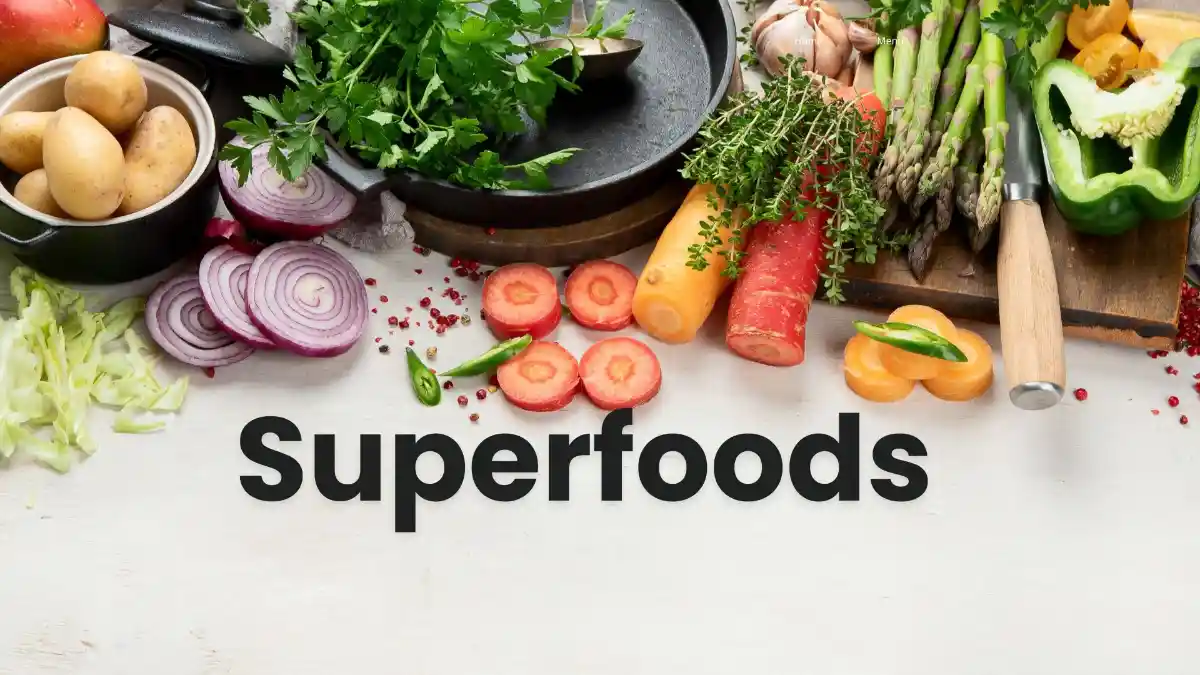1. Introduction
In 21st-century America, people are now more health and nutrition conscious than ever before. The rising lifestyle diseases, such as obesity, heart disease, diabetes, and cancer, have forced Americans to pay serious attention to their diet. At such a time, the concept of ‘nutrient-dense foods’ has gained immense popularity in the American health and wellness industry.
Superfoods are natural foods that are rich in extraordinary nutrients and improve the overall health of our body. The trend of Nutrient-packed smoothies has been growing rapidly in the US over the last decade, giving rise to a billion-dollar health industry in America. Due to this, the government also started many NGOs so that everyone living in America started taking special care of their health.
In this article, we will understand in depth the popular Nutrient-packed smoothies in America, their scientific benefits, research, their role in modern lifestyle, and the opinion of experts.
2. What are superfoods?
Nutrient-packed smoothies are classified as nutrient-dense foods because they provide high levels of essential nutrients per calorie. This means you get more vitamins, minerals, and antioxidants without excess sugar, fat, or calories. Nutrient-dense foods like kale, salmon, avocado, and quinoa are especially effective for people trying to manage weight or chronic diseases. The CDC encourages Americans to fill half their plate with nutrient-rich fruits and vegetables. Including such foods daily helps prevent nutrient deficiencies and promotes healthy health. The focus on nutrient density is a key focus of the superfood revolution currently underway in the US.
2.1 Functional Foods
Functional foods are natural foods that provide additional health benefits beyond basic nutrition. These include fruits, vegetables, nuts, seeds, fermented foods and fortified items that help prevent disease and promote optimal health. In the US, These functional foods, often called power-packed natural ingredients, offer more than just nutrition. Examples include oats (for cholesterol), kefir (for digestion) and walnuts (for brain function). Incorporating functional foods into your diet helps maintain energy, support the immune system and improve mental clarity. The American Nutrition Association supports functional foods as part of preventive health strategies.
3. The Science Behind Superfoods in America
The American diet is typically high in calories, high in sugar, and high in saturated fats, which has led to a rapid increase in obesity and heart disease.
Nutrient-rich foods help combat these health challenges by:
Anti-Inflammatory Properties: Chronic inflammation is a major cause of heart disease, cancer, and autoimmune diseases in America. The antioxidants found in superfoods reduce it.
Improved Gut Health: Digestive disorders, IBS, and leaky gut problems are common among Americans. Nutrient-packed smoothies like kefir, Greek yogurt, and fiber-rich fruits improve gut health.
Mental Health: Depression, anxiety, and stress are increasing rapidly in America. Omega-3-rich superfoods benefit mental health.
Control of Metabolic Syndrome: Nutrient-packed smoothies reduce the risk of type 2 diabetes by increasing insulin sensitivity.
3.1 Antioxidants
Antioxidants are compounds found in many superfoods that protect the body from oxidative stress and damage caused by free radicals. These harmful molecules can cause chronic diseases such as cancer, aging and heart disease. High-antioxidant foods such as blueberries, green tea, kale and dark chocolate are rich in antioxidants such as flavonoids, polyphenols and vitamins C and E. A study by the Linus Pauling Institute confirms that regular consumption of antioxidant-rich foods reduces inflammation and enhances cellular health. By including more antioxidants in your daily meals, you support your body’s natural defense system and promote long-term health.
4. Categories of popular superfoods in America
4.1 Berries
Blueberries
- The face of the nutrition revolution in America.
- Rich in anthocyanins, which are highly beneficial for the heart, brain, and skin.
- According to a study by the University of Maine, eating 1 cup of blueberries daily can reduce the risk of heart disease by 12%.
4.2 Raspberry, Strawberry, Blackberry
- High fiber
- Anti-cancer properties
- Helpful in blood sugar control
4.3 Leafy Greens
Kale
- Called ‘The Queen of Greens’ in America.
- Rich in vitamin K, vitamin C, calcium, lutein, and fiber.
- Harvard says that kale is good for your eyes and bones.
Spinach
- Store of folate, iron, and antioxidants.
- Especially beneficial in anemia and pregnancy.
Broccoli
- Sulforaphane, present in broccoli, has been linked to reduced cancer risk in multiple studies..
- Cleans the intestine and liver.
4.4 Plant-Based Diet
A plant-based diet rich in healing foods, such as leafy greens, berries and legumes, is becoming popular across the US due to its potential to prevent chronic diseases. Nutrient-packed smoothies are a key component of this lifestyle, providing plenty of nutrition without relying on animal products. Foods such as quinoa, flaxseed, chia seeds, kale and spinach are main components of a plant-based diet. The Academy of Nutrition and Dietetics states that well-planned plant-based diets are nutritionally adequate and may reduce the risk of heart disease, high blood pressure, type 2 diabetes and certain cancers. Superfoods make plant-based eating both fun and highly effective.
4.5 Healthy Fats
Avocado
- America’s favorite functional food.
- Monounsaturated fats are good for heart health.
- Rich in fiber, potassium, and folate.
Walnuts
- Vegetarian source of omega-3 fatty acids.
- Extremely beneficial for brain health.
- Promoted by the California Walnut Commission.
Almonds
- Excellent source of calcium, vitamin E, and magnesium.
- The American Heart Association also considers it safe for the heart.
4.6 Omega-3 Sources
Salmon
- The most popular fatty fish in America.
- Rich in EPA and DHA.
- Beneficial for the heart, brain, and joints.
Flaxseeds
- A plant-based source of omega-3 fatty.
- Rich in fiber and lignans—helps in hormone balance.
Chia Seeds
- Hydrating properties.
- Beneficial in weight management and blood sugar control.
4.7. Antioxidant Drinks
Green Tea
- Powerful antioxidant called catechin.
- Helpful in weight loss and protection from cancer.
Matcha Green Tea
- More powerful form of green tea.
- Popular in the biohacking community in the US.
Red Wine (Moderate Consumption)
- Contains resveratrol—beneficial for heart health.
- The American Heart Association recommends consuming it in limited quantities.
4.8. Protein Sources
Quinoa
- Gluten-free complete protein.
- Favorite cereal of the American fitness industry.
- Rich in iron and fiber.
Greek Yogurt
- A protein-rich functional food in America.
- A rich source of probiotics, protein, and calcium.
- Great for digestion and bones.
5. Superfoods vs Supplements
5.1 Whole Food Nutrition
Whole food nutrition means eating foods in their natural, unprocessed state, which retains the full range of nutrients. Unlike individual supplements, whole functional foods such as almonds, blueberries and avocados provide synergistic health benefits through fiber, enzymes and antioxidants. These foods are easily absorbed and used by the body. Health experts consistently recommend prioritizing whole food nutrition over pills for lasting health. For example, eating an orange provides more vitamin C as well as fiber and flavonoids than any capsule. Superfoods embody the principle of whole food nutrition by providing complete nutrition in every bite.
6. Why are superfoods so popular in the US?
Biohacking Trends: American millennials and biohackers use superfoods to optimize their performance.
Effect of Functional Medicine: Experts like Dr. Mark Hyman popularized food medicine in the US.
Celebrities & Influencers: From Gwyneth Paltrow to Chris Hemsworth, they promote SF.
High demand in stores like Whole Foods and Trader Joe’s.
7. Scientific Research and Clinical Studies in America
| Research institute | Conclusion |
| Harvard Medical School | Superfoods beneficial for the gut, brain, and skin |
| NIH (National Institutes of Health) | Omega-3 and antioxidants reduce the risk of cancer |
| Mayo Clinic | Superfoods beneficial for the gut, brain and skin |
| USDA Dietary Guidelines | Superfoods included in America’s nutrition guide |
8. Practical Superfood Meal Plan
- Oats + chia seeds + blueberries for breakfast.
- Kale, spinach, avocado, and flaxseeds in smoothies.
- Quinoa bowl + grilled salmon for lunch.
- Walnuts, almonds, or Greek yogurt for snacks.
- Broccoli and grilled chicken for dinner.
- Green tea or matcha twice a day.
9. Immune Boosting Foods
Superfoods also play an important role in boosting the immune system. Citrus fruits, garlic, turmeric, ginger and green leafy vegetables contain vitamins, minerals and phytonutrients that strengthen the body’s defense system. Vitamin C, zinc and selenium – which are commonly found in berries, broccoli and seeds – are essential for immune function. According to the Cleveland Clinic, immune-boosting foods can reduce the frequency and severity of infections. In post-pandemic America, there has been a surge in demand for natural immune-boosting foods that support immunity naturally without synthetic supplements. Incorporating these foods regularly helps build resilience and fight seasonal illnesses and viruses.
10. Side effects and precautions of superfoods
- Excessive consumption can cause allergies, indigestion, or blood thinning.
- Bloating is possible with high-fiber SF.
- Pregnant women and the elderly should pay special attention to the quantity.
- Consume superfoods while on blood thinners as advised by your doctor.
11. Myths About Superfoods
11.1 Affordable Superfoods
A common myth is that superfoods are expensive and only available in specialty stores. In fact, many affordable Nutrient-packed smoothies can be found at local supermarkets or farmers markets. Beans, oats, bananas, kale and eggs are nutrient-rich and affordable. According to the USDA, planning meals around seasonal produce and bulk items can help people enjoy superfoods without blowing their budget. Affordable doesn’t mean less nutritious — canned salmon, frozen spinach or lentils offer the same health benefits as high-end trendy items. Eating healthy in America doesn’t require a high budget, just smart choices.
11.2 Superfood Smoothie Recipes
Nutrient-packed smoothies smoothies are one of the easiest and most delicious ways to boost your nutrition. A basic smoothie can include kale, spinach, chia seeds, frozen berries, bananas and almond milk – full of fiber, antioxidants and omega-3s. You can also add protein powder, turmeric or Greek yogurt for added benefits. These drinks are popular among health-conscious Americans for their convenience and taste. According to the Mayo Clinic, smoothies are a great way to consume many nutrients in one meal. Adding a superfood smoothie to your morning routine helps with digestion, immunity and weight control.
12. Conclusion
In the modern and fast-paced life of America, Nutrient-packed smoothies serve as a powerful shield of nutrition for the body. Scientific research, dieticians’ advice, and people’s experience have proved that superfoods not only keep diseases away but also help in living a long, healthy, and energetic life.
10 Science-Backed Weight Loss Tips to Burn Fat Fast -Also Read.







Nice and very informative